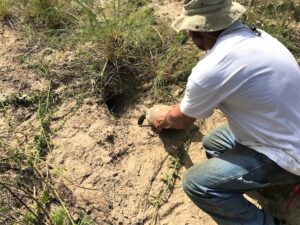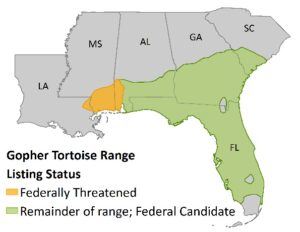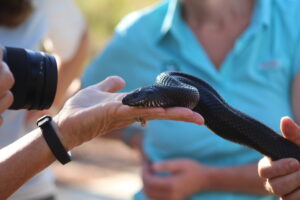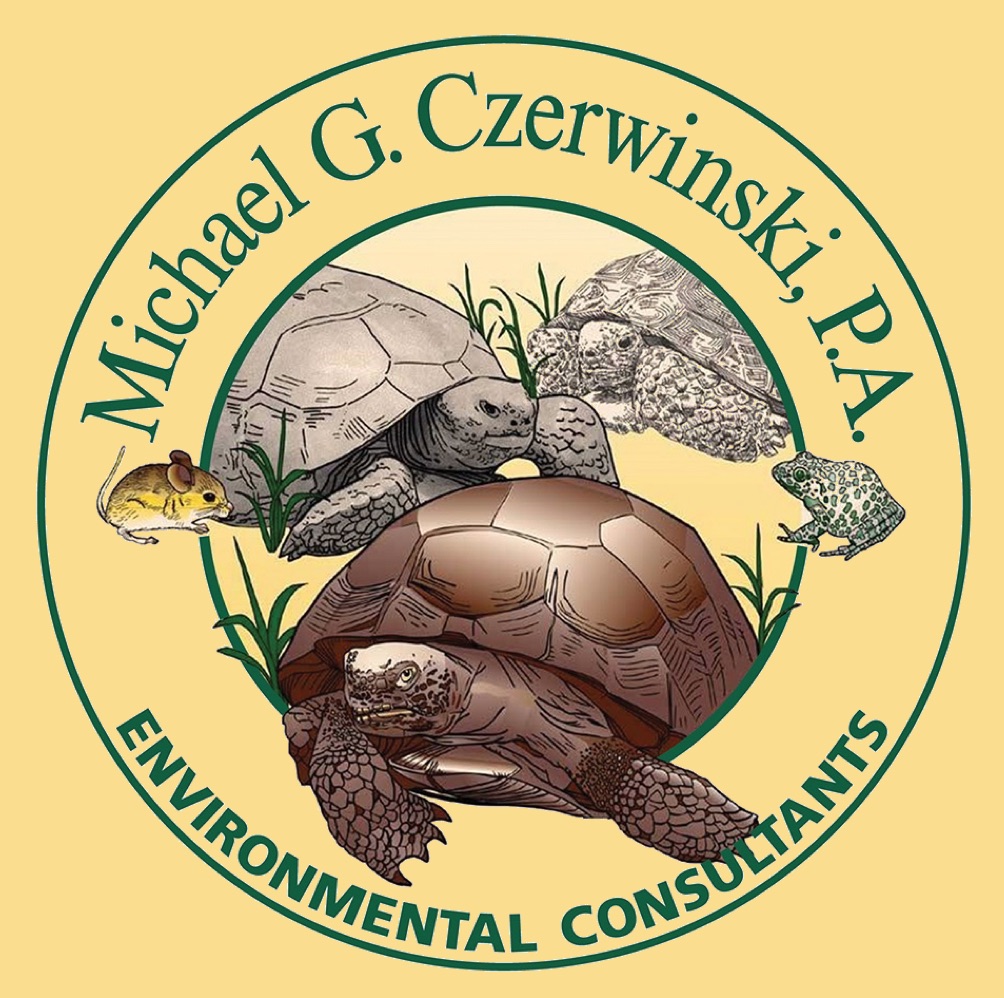Gopher Tortoise Key to an Ecosystem
Riddle: What lives in a hole . . . ?
One of the slowest creatures in the forest has a huge impact on the forest. How can that be? It can be when it’s a Gopher Tortoise (Gopherus polyphemus). Hundreds of other species rely on these gentle ground loving herbivores for their very existence. And like us, when it gets cold and hot these Tortoises go into their burrows.
The wHole Truth

Truth be told, the hole is almost the whole story (forgive the pun). Gopher tortoises are burrowing animals. They live in sandy soils and dig holes (burrows) that extend as far as 40 feet, and be 8 to 10 feet deep. These deep holes provide a habitat for over 350 different species of animals and insects. Not only are burrows protective, but they keep a fairly constant temperature. Because so many creatures rely on these burrows, the Gopher Tortoise is considered a “Keystone Species”. Because they are so important, we get benfits from managing the lands where they live.
Gopher Tortoise: Key to survival for hundreds of others
National Geographic define keystone species in several way. One of them is an “Ecosystem Engineer“.
An ecosystem engineer is an organism that creates, changes, or destroys a habitat. There is perhaps no clearer example of a keystone engineer than the beaver. River ecosystems rely on beavers to take down old or dead trees along riverbanks to use for their dams. This allows new, healthier trees to grow in abundance. The dams divert water in rivers, creating wetlands that allow a variety of animals and plants to thrive.
Like the beaver, the gopher tortoise creates new structures for other animals to find shelter, make nests, and lay eggs.

The State of Florida lists the Gopher Tortoise as a threatened species. And it has Federal “threatened” status outside Florida.
Florida’s Fish and Wildlife Conservation Commission (FWC) describes the tortoise diet.
Gopher tortoises are herbivorous; they feed on low-growing plants like wiregrass, broadleaf grasses, gopher apple, and legumes (bean family plants). Tortoises are opportunistic grazers, so the dominant plants within their environment likely make up the bulk of their diet (Ernst et al. 1994). Tortoises may alter their diet seasonally depending on forage availability. They typically forage within 160 ft of their burrow but will travel farther if forage is unavailable. Gopher tortoises may drink water that has pooled following a rainstorm, but generally consume an adequate amount of water from forage plants.
Look but don’t touch
Both these tortoises and their burrows are protected by law. That’s why many call in environmental specialists to locate, and sometimes relocate not only the tortoise, but the other species that live in and around its burrows.
Who’s there?

Examples of other species that make these burrows their homes are burrowing owls, Florida mice, indigo snakes, rabbits, gopher frogs, and invertebrates.
Gopher Tortoise Threats
Tortoises suffer a shrinking habitat as humans expand their land use. Tortoise ranges are impacted by residential and commercial construction, highways, mining, and forestry.
As human populations increase, female tortoises seeking open sandy locations migrate, and risk injury or death crossing roadways.
If you need help
We answer questions. Whether you’re looking at some property for a home, working on a commercial project, or have questions about development, we’re available to help. Our team links together many services helping in the permitting process. Contact us if you are planning any development. We can provide assistance in the project planning phase for any development in an area where tortoises are present.
Learn more about living with gopher tortoises
FWC’s informative video gives a glimpse into gopher tortoise habitats and what to do when you encounter one of these gentle creatures.
You can help
Use the FWC App to report gopher tortoise sightings. Find out more here.
Legal protections
The gopher tortoise and its burrow are protected by the FWC. If you find a burrow, it’s the same as finding a tortoise. The law assumes that “potentially occupied burrows” are occupied.
The FWC requires giving gopher tortoise space. It mandates a minimum of 25 feet clearance of burrows for most construction and clearing/grubbing activities.
You’ll need a relocation permit if your project cant avoid a burrow by at least 25 feet. Work stops in that area until the relocation permit is issued.
